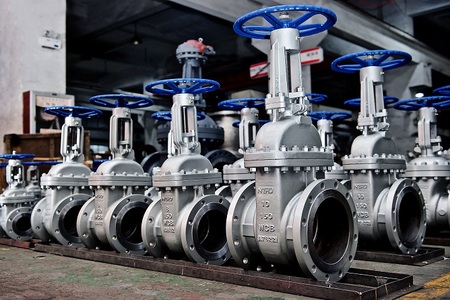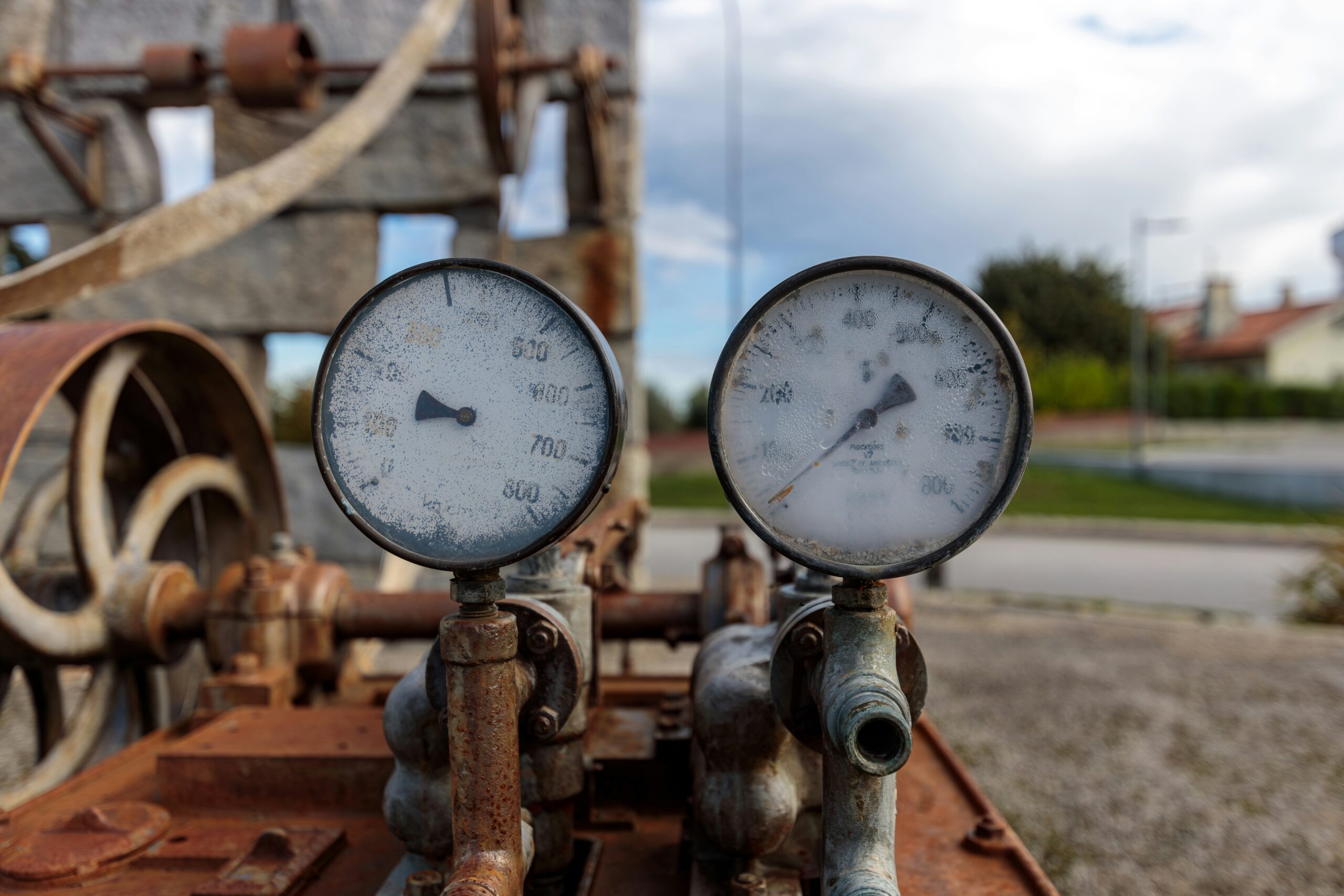Glass Plate Level Gauge: Principles, Structure, Applications, and Safety Operating Guidelines
Working Principle
The principle of communicating vessels. The high-pressure glass plate level gauge is connected to the measured container to form a communicating vessel. According to the principle of communicating vessels, the liquid level inside the gauge remains at the same height as the liquid level inside the container. The liquid level observed through the glass plate accurately reflects the actual liquid level inside the container.
Structural Components
Glass Plate: The core component of the level gauge, made from high-strength, high-temperature-resistant, and high-pressure-resistant special glass materials such as aluminosilicate glass. It offers excellent transparency for clear liquid level display and possesses strong seismic resistance, impact resistance, and corrosion resistance.
Metal Frame: Used to secure and support the glass plate, typically made of high-quality carbon steel or stainless steel, offering excellent strength and corrosion resistance, capable of withstanding pressure in high-pressure environments.
Connection Flange: Used to connect the level gauge to the measured container, ensuring sealing performance and forming a connected system between the level gauge and the container. The specifications and dimensions of the connection flange are designed according to different application requirements and container interfaces.
Valves and safety devices: Valves, such as needle valves, are typically installed at the upper and lower ends of the level gauge. These valves not only function as shut-off valves, but the steel balls inside also serve as check valves. In the event of accidental glass plate damage, the steel balls automatically close the fluid flow channel under container pressure, preventing large-scale liquid leakage and providing safety protection.
Lighting devices: Some high-pressure glass plate level gauges are equipped with lighting devices, such as LED lights, to enable clear observation of the liquid level in low-light environments and improve the accuracy of readings.


Features
• Accurate measurement: Capable of accurately measuring liquid level height in high-temperature and high-pressure environments, providing reliable data support for industrial production.
• Intuitive display: Liquid level is directly displayed through the transparent glass plate, eliminating the need for complex conversions or calculations. Operators can visually monitor changes in liquid level, facilitating timely adjustments and decisions.
• Simple structure: Primarily composed of glass plates, metal frames, and connection flanges, it lacks complex electronic components or mechanical structures, ensuring high reliability and stability with low maintenance costs.
• Safe and reliable: Equipped with safety devices such as safety steel balls to prevent liquid leakage and accidents, ensuring the safety of personnel and equipment. The principle is that the steel ball is located in a groove below the valve seat. In the event of a leak in the level gauge, the steel ball is lifted by the liquid and pressed against the valve seat (pressure ≥ 0.3 MPa), blocking the flow channel, thereby slowing down liquid loss. When the valve is closed, the valve core pushes the steel ball back to its initial position.

Application Areas
• Petrochemical Industry: Used to monitor liquid levels in various petroleum storage tanks, reactors, towers, and other equipment, ensuring safe and stable production processes.
• Power Industry: In thermal power plants, it can be used to monitor boiler drum water levels, playing a crucial role in ensuring safe boiler operation and stable steam supply.
Metallurgical industry: Used to monitor the liquid metal level in equipment such as blast furnaces and converters, as well as the liquid level of media such as acid-base solutions and lubricating oil in various storage tanks.
Selection and Installation
Selection: Consider factors such as the properties of the measured medium (e.g., temperature, pressure, corrosiveness), measurement range, and installation method to select an appropriate model and specification of a high-pressure glass plate level gauge.
Installation:
Before installation, verify that the level gauge model and specifications match the operating conditions, and confirm that the flange dimensions, pressure rating, and material (e.g., carbon steel, stainless steel) meet the requirements of the measured medium (corrosivity, temperature, pressure, etc.).
Inspect the glass plate for cracks, scratches, or other defects, and ensure that the sealing gaskets (e.g., asbestos, PTFE gaskets) are intact and that metal components have no deformation or corrosion.
Ensure that the valves at both ends of the level gauge (shut-off valve, check valve) operate smoothly and that the safety steel ball (leak prevention device) functions reliably.
Installation location and method:
The installation location should be easily observable, avoiding direct exposure to strong light or dark corners (additional lighting can be provided if needed), and should be kept away from vibration sources (such as pump bodies) to minimize the risk of glass plate damage due to vibration fatigue.
It must be installed vertically to ensure the effective operation of the communicating vessel principle between the level gauge and the container. Tilting may cause level display errors. When connecting via two flanges, ensure the center distance deviation between the level gauge flange and the container flange is within the allowable range (typically ±5mm). Forced alignment is strictly prohibited to prevent deformation of the frame or glass plate due to stress.
For high-temperature and high-pressure conditions, it is recommended to install expansion joints at the flange connection points to compensate for thermal expansion and contraction differences between the equipment and the level gauge caused by temperature changes.
Sealing and safety devices:
When installing sealing gaskets, ensure proper specifications and no misalignment. When tightening flange bolts, apply force symmetrically and uniformly to avoid local over-tightening, which could damage the gasket or cause uneven stress on the glass plate.
If the medium is toxic, flammable, or high-pressure liquid, install an isolation valve between the level gauge and the container to facilitate medium cutoff during maintenance; simultaneously inspect the sealing performance of the safety steel ball (verifiable via pressure testing).
Pipe pre-treatment:
Before installation, clean any debris (such as weld slag or rust) from the container connection port and the interior of the level gauge to prevent debris from blocking the safety steel ball or scratching the glass plate.
For viscous or crystallizable media, install heating devices (such as steam heating or electric heating) on the upper and lower pipes of the level gauge; however, control the heating temperature to prevent damage to the glass plate due to localized overheating.
Usage and operation precautions
Initial startup operation
Before startup, slowly open the upper valve (vent valve) of the level gauge first, then slowly open the lower valve (inlet valve) to gradually expel air from the level gauge, preventing medium impact from causing glass plate breakage.
Observe whether the liquid level rises steadily. If abnormal fluctuations or leaks occur, immediately close the valves for inspection.
Daily Observation and Maintenance
Regularly clean the surface of the glass plate to prevent residual medium from affecting observation. If the glass plate is severely scaled, shut down the equipment, disassemble, and clean it. Do not scrape the glass surface with hard objects.
When observing the liquid level, note the “parallax” effect. Read the liquid level perpendicular to the glass plate surface to avoid measurement errors caused by oblique observation.
For high-temperature media, inspect the glass plate for overheating discoloration (e.g., whitening, cracks). If abnormalities are detected, shut down the system immediately and replace the glass plate.
Safety Operating Procedures:
Striking or colliding with the level gauge or connecting pipes is strictly prohibited to prevent glass plate damage from external impacts.
If minor cracks or leaks are detected in the glass plate, immediately close the upper and lower valves, wait for the medium to depressurize, and then replace the component. Do not perform maintenance under pressure.
For corrosive media, regularly inspect the metal frame and flanges for corrosion. If rust or seal failure is detected, promptly replace the components with corrosion-resistant materials.
Shutdown and Maintenance Operations
When shutting down, first close the lower valve of the level gauge, then close the upper valve, slowly open the vent valve to relieve pressure, and only disassemble and inspect after the medium inside the level gauge has been completely drained.
When replacing the glass plate, use high-pressure glass of the same specifications and material (such as aluminum-silicon glass or borosilicate glass) to ensure its pressure rating matches the operating conditions. Do not substitute ordinary glass.
How to determine whether the glass plate of a high-pressure glass plate level gauge needs to be replaced
To determine whether the glass plate of a high-pressure glass plate level gauge needs to be replaced, a comprehensive assessment of its appearance, operational performance, and safety risks is required. The following are the specific criteria and methods for determination:
1. Visual inspection
Cracks or damage
This is the most direct indication for replacement. Regardless of the size of the crack (including minor cracks or through cracks), even if no leakage has occurred, immediate replacement is mandatory.
Reason: Under high-pressure conditions, cracks can rapidly expand due to pressure shocks, temperature changes, or vibrations, potentially causing the glass plate to suddenly shatter and result in medium leakage (especially for toxic, flammable, or high-pressure media, posing extremely high risks).
Inspection method: Regularly inspect the glass plate surface under strong light to observe any visible cracks (including areas where the edges contact the metal frame, as stress concentration in these areas can lead to cracks).
Glass discoloration or degradation
After prolonged exposure to high temperatures or corrosive media, the glass plate may exhibit whitening, fogging, localized discoloration (such as brown or black hues), or surface peeling/flaking. These indicate that the glass material has been damaged by chemical corrosion or thermal aging, resulting in reduced strength, and replacement is necessary.
Typical scenarios: In acidic or alkaline media, or high-temperature steam environments (e.g., boiler drum level gauges), glass may degrade due to corrosion or thermal stress.
2. Abnormal Operating Conditions
Leakage or Seal Failure
If medium leakage occurs at the sealing points between the glass plate and metal frame (even minor leakage), and the issue cannot be resolved after ruling out causes such as aged seal gaskets or loose bolts, it may be due to deformation or edge damage of the glass plate causing an uneven sealing surface. In such cases, the glass plate must be replaced.
Note: Leaks may be accompanied by a “hissing” sound (high-pressure gas) or localized condensation/frosting (low-temperature medium), requiring immediate shutdown for inspection.
Signs of reduced pressure resistance
Under normal operating pressure conditions, if slight bulging deformation (non-flat state) is observed on the glass plate, or if “vibration” or “abnormal noise” occurs during pressure fluctuations, deformation or abnormal noise indicates internal stress imbalance, meaning the glass can no longer withstand the current pressure and poses a risk of fracture. Immediate replacement is required.
3. Preventive replacement based on usage environment and lifespan
Exceeding the recommended service life
The service life of high-pressure glass plates is influenced by material properties, operating conditions (temperature, pressure, medium corrosivity), and is generally recommended for preventive replacement within 1-3 years (refer to the manufacturer’s specifications for specifics), especially in the following scenarios:
• The medium is highly corrosive (e.g., strong acids, strong alkalis);
• Long-term exposure to high temperatures (≥200°C) or frequent temperature fluctuations;
• Significant equipment vibration (e.g., near pumps or compressors).
Even if there are no obvious external abnormalities, aged glass material may already have internal damage (e.g., micro-cracks) that are difficult to detect with the naked eye.
Replacement in Synchronization with Equipment Maintenance
During comprehensive maintenance of the level gauge, replacement of seals, or valves, it is recommended to simultaneously inspect the condition of the glass plate. If the usage time is approaching the recommended lifespan, it is advisable to directly replace the glass plate with a new one to avoid repeated shutdowns in the short term.
4. Critical conditions prohibiting continued use
When the following conditions occur, the glass plate must be immediately discontinued and replaced; continued operation is prohibited:
• The glass plate has obvious through cracks, or local areas are already cracked or detached;
• “Spiderweb-like” cracks (typical signs of stress concentration) are observed on the glass surface during operation;
• Severe leakage that cannot be temporarily controlled by closing the valve;
• Deformation at the connection between the glass and the frame, resulting in complete seal failure.
Core Principles for Replacing Glass Plates
Principle: “Safety first, prevention-oriented.” Prioritize judgment based on visual inspection (cracks, damage, discoloration) and operational status (leaks, deformation), combined with usage environment and lifespan, to perform preventive replacements and avoid safety incidents caused by glass failure. When replacing, use high-pressure-specific glass of the same specifications and material (e.g., aluminum-silicate glass, borosilicate glass), and strictly prohibit the use of ordinary glass as a substitute.
Summary
The installation and use of high-pressure glass plate level gauges must adhere to the principles of “safety, accuracy, and stability,” with particular emphasis on sealing performance, force balance, medium compatibility, and routine maintenance. Especially in high-pressure, high-temperature, and corrosive conditions, strict adherence to operating procedures is required to prevent equipment failures or safety incidents caused by neglecting details.
 A Comprehensive Guide to Wedge Gate Valves: Principles, Advantages, and Applications
A Comprehensive Guide to Wedge Gate Valves: Principles, Advantages, and Applications
 Toshiba Unveils Advanced 100V Power MOSFET with Next-Generation Manufacturing Process
Toshiba Unveils Advanced 100V Power MOSFET with Next-Generation Manufacturing Process
 Global Process Instrumentation Market Outlook 2025–2035
Global Process Instrumentation Market Outlook 2025–2035
 Industrial Valve Supplier Guide: How to Avoid Costly Mistakes in 2025
Industrial Valve Supplier Guide: How to Avoid Costly Mistakes in 2025
